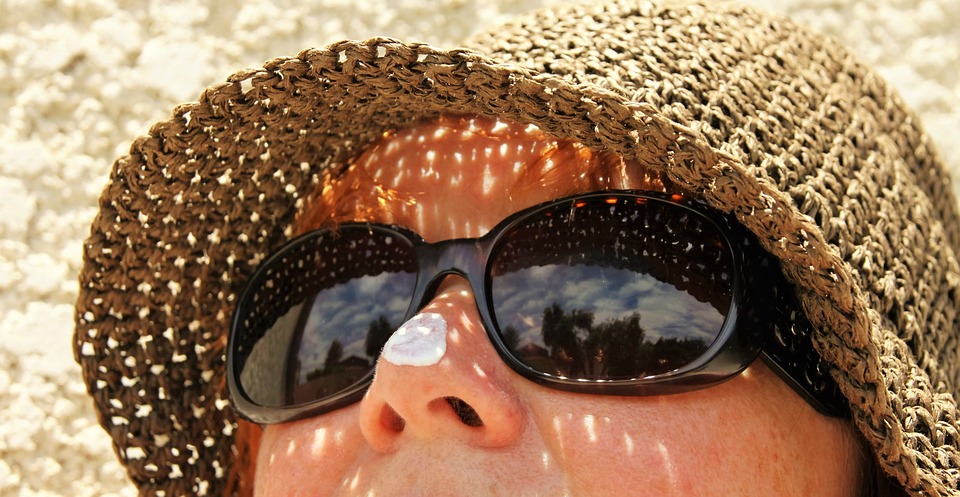Posted by: Atlantic Eye Institute in Eye Exams

It’s July, the Summer fun is in full swing, and so is the Sun. Many of us will be spending a large percentage of time outdoors, but if we aren’t practicing proper UV protection, it may cause detrimental damage.
There are two types of UV rays:
UV-A can damage the macula, a part of the retina at the back of your eye. Most of us are exposed to large amounts of UVA throughout our lifetime. UVA rays account for up to 95 percent of the UV radiation reaching the Earth’s surface.
UV-B can damage the front part of your eye (the cornea and the lens) absorbs most UV-B rays, but these rays may cause even more damage to your eyes than UV-A rays. UVB, the main cause of skin reddening and sunburn, tends to damage the skin’s more superficial epidermal layers. It plays a key role in the development of Eyelid skin cancer.
There are several eye conditions and diseases caused or aggravated by exposure to UV Rays:
Macular Degeneration: UV rays may lead to macular degeneration, a leading cause of vision loss for older Americans. Macular Degeneration is caused by the deterioration of the central portion of the retina, the inside back layer of the eye that records the images we see and sends them via the optic nerve from the eye to the brain.
Cataract: UV rays, especially UV-B rays, may also cause some kinds of cataracts. A progressive clouding and yellowing of the crystalline lens, the eye’s focusing mechanism.
Pterygium: Another UV-related problem is a growth called pterygium (Surfers Eye). It is a growth of pink, fleshy tissue on the conjunctiva, the clear tissue that lines your eyelids and covers your eyeball. It usually forms on the side closest to your nose and grows toward the pupil area. Eventually, the growth may block vision. Especially in surfers, skiers, fishermen, farmers, or anyone who spends long hours under the mid-day sun or in the UV-intense conditions found near rivers, oceans, and mountains.
Intraocular melanoma: Even though rare, it is the most common eye cancer in adults. It starts in the uveal tract, the middle layer of the eye containing the iris and the pupil, which lies in the center of the iris. Symptoms may include a dark spot on the iris, blurred vision, or a change in the pupil’s shape. Sometimes, however, there are no symptoms.
Skin Cancer: Skin cancer around the eyelids is also linked to prolonged UV exposure. Skin cancers of the eyelid, including basal cell carcinoma and squamous cell carcinoma as well as melanoma, account for 5 to 10 percent of all skin cancers. Most occur on the lower lid, which receives the most sun exposure.
Corneal Sunburn: Corneal sunburn, called Photokeratitis, is the result of high short-term exposure to UV-B rays. The damage to the cornea can be compared to the damage ultraviolet light can do to the skin, causing sunburn. It can be very painful and may cause temporary vision loss.
Listed below are some ways you can help protect your eyes from UV Rays:
1. Check Your UV Protection. Not all sunglasses have the same amount of UV protection. In fact, some lenses favor fashion over protection. A good pair of sunglasses will block almost all dangerous UV rays.
2. Don’t Forget the Kids. Sun and UV Rays can impact children more so than adults due to longer periods playing outdoors without proper sun protection. Children are more vulnerable to retinal damage from UV rays because the lens inside a child’s eye is clearer than an adult lens, allowing more UV to penetrate deep into the eye. Also, small infants should always be shaded from direct exposure to the sun.
3. Protect the Skin Around Your Eyes. Making sure your sunglasses cover a wide area of your face not only protects the skin around your eyes from premature wrinkles, sunburn or melanoma.
4. Know That Clouds Don’t Provide UV Protection. The sun’s rays can pass through clouds. Sun damage to the eyes can occur any time of year, not just in summer.
5. Wear a Hat. Wearing a hat with a wide brim has just the right amount of reach to keep your eyes protected when the sun is directly overhead. But should also be combined with wearing sunglasses.
6. Protect Yourself All the Time. Always take your sunglasses with you to keep you protected from the outdoor activities. Just because you’re are going to be outside for a few minutes does not negate the need for proper sun protection.
7. Wear Sunglasses Over Your Contacts. Sunglasses provide complete UV protection of your eyes, eyelids, and the skin around your eyes.



